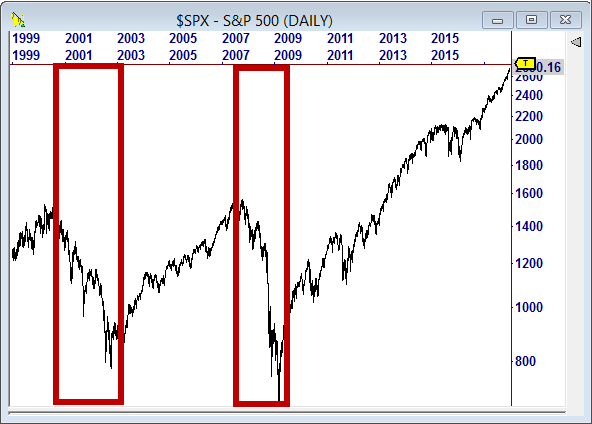Introduction to OmniFunds
Nothing Else Like OmniFunds.
OmniFunds is an investment service unlike anything else on the market. Instead of leaving your investment account at the mercy of the always changing market, OmniFunds uses proprietary technology to determine the “personality” of the current market, and then selects the securities that are poised to outperform.
The process of automatic switching is performed at determined “intervals”. An interval can be days, weeks, months, quarters, etc. and is determined by the OmniFund you choose and how you set your risk tolerance.
The OmniFunds Structure.
An OmniFund consists of a Portfolio. A Portfolio includes various sectors, which are basically groups of securities that have a unique analysis characteristic. OmniFunds uses multiple “levels” in order to determine which securities to invest in for the current interval.

The OmniFunds Risk Tolerance.
An OmniFund consists of a Portfolio. A Portfolio includes various sectors, which are basically groups of securities that have a unique analysis characteristic. OmniFunds uses multiple “levels” in order to determine which securities to invest in for the current interval.

OmniFunds Risk Tolerance Scale
Once You Have Selected Your Risk Setting...
OmniFunds handles everything else for you automatically. It will automatically pick the best stocks or ETF’s for the upcoming interval based on the type of market we are currently in and the recent performance of the individual securities. Let’s look at each step of the OmniFunds Process.
How It Works
You want your money to grow, but you also want protection against uncertain markets.
In short, you want the greatest return for the least risk. That same goal was the incentive for our creation of OmniFunds.
With classic investing, you would normally buy a mix of securities (Mutual Funds, Stocks, ETF’s, etc.) in order to create a diversified portfolio. You would then hold these securities regardless of what happens in the financial markets.
While this concept may sound like a sensible approach in strong markets (although a diversified portfolio rarely outperforms bull markets), in markets like we have had in 2000 or 2008, it didn’t serve investors well.

To the left is a chart of the S&P 500 index, which represents the broad US stock market. We have highlighted the two main time frames when the market was not only bearish, but it wiped years of growth in a matter of months.
You should expect more from an investment service. A profitable approach needs to be understood in order to assess current market direction and realize that adjustments need to be made to not only avoid major market meltdowns, but also to outperform regular markets.
Most “professional” fund managers assert that you can’t time the market. Generally, they’re right – nobody knows what the market is going to do. But it is possible to assess probability of upward or downward movement in the near future based on supply and demand as evidenced in price behavior.
Here at Intelligent Fund Management, LLC, we’ve built an investment service that’s easy to understand and goes well beyond what the classic “advisors” can offer in terms of performance. It’s called OmniFunds.
determining market states
Major Advantages
One of the major advantages that OmniFunds has over other investment services is that it adjusts it investing approach based on current market behavior. If the market is very bullish, we may take a more aggressive approach and look for high flying stocks. Or if the market is in a pronounced downtrend, we may look to put our money into safer securities such as bond and utility ETF’s. By determining the “state” of the current market, we can tailor our OmniFund for an optimal outcome. We refer to this process as determining Market States.
A Market State is assessed by looking at a broad market benchmark, such as the S&P 500 Index, and evaluating it in order to determine which state the market is in. We may detect that we are in a strong bullish market, so we want to adjust our positions to find securities that normally outperform bull markets. Or maybe we determine that the market is in a highly volatile state. In that case, we would want to adjust our investments in order to avoid the fear that is normally inherent in uncertain markets.
The weekly chart of the S&P 500 Index to the right illustrates the concept of Market States. We are using a 100 Period Simple Moving Average in order to determine whether the market is strong or if the market is weak. If the close value of the index is above the indicator, we can consider that to mean that the market is bullish (strong). If the close value of the index is below the indicator, then we can consider it to mean that the market is bearish (weak).
If the market is bullish, we would take a different approach to which securities we would invest in than if the market were bearish. For instance, in a bullish market many investors would want to invest in consumer discretionary stocks and ETFs as these stocks tend to perform very well in strong markets. However, if the market is bearish many investors would want to invest in utility or precious metal stocks or ETFs as these types of securities represent a “defensive” position in weak markets.

Weekly Chart of the S&P 500
This process is completely automated for each OmniFund. The client can rest assured that our Market State analysis will position them to outperform in strong markets while also having the assurance of safety in weak markets.
Selecting the Best Securities for the Current Market
Once we have determined the state of the current market, OmniFunds look for the best securities to invest in for that type of market. Our first step in the process is to filter out any symbols in each portfolio that are not poised to perform in the upcoming interval. Again, we apply classic and proven technical analysis concepts in order to disqualify the securities that we do not meet our filtering criteria.
The OmniFunds Process

Now that we have filtered out the poorer performing securities, we then analyze the rest of the securities and rank them. Different portfolios will have different ranking functions. This process allows us to select the highest ranked stocks or ETFs to invest in for the upcoming interval.
We start with a universe of securities. The filtering process is applied in order to only consider the securities that currently performing. Then the securities that passed the filtering process are ranked. The top "N" ranked securities are then selected to be included in our account for the upcoming interval. The number of securities selected depends on the Portfolios configuration.
The OmniFund filtering and ranking process insures that we are selecting our investments based on not only what is going on in the broad market, but that we are also investing in the securities that are poised to give us the optimal outcome in the upcoming interval. Learn more about this process in our white paper The Security Selection Process.
creating true diversity
The final step of our process is to take the securities that have been selected by the Portfolio, and determine how much of our account we will allocate to them. Allocation is important in that it helps to determine diversification. The reason we want diversification is that it helps to protect our account in the case of a downturn in a certain sector or industry group.
Are Robo Advisors Diversified?
Almost every Robo Advisor uses an allocation method called Modern Portfolio Theory. This allocation method was created in 1952 (so the “modern” term is debatable) by economist Harry Markowitz.
Modern Portfolio Theory has come under a lot of scrutiny lately. The model is based on a portfolio managers assumptions on future return and risk, and it calculates the portfolio’s correlation based on decades of data. These assumptions and calculations are usually updated only once a year.
The problem that many are finding with this approach is that a) assumptions are made, but adjustments to those assumptions only take place once a year, and b) calculating security correlation going back decades isn’t an accurate measurement of what is happening now.
Modern Portfolio Theory may have been a good answer in 1952, but in today's ever-changing markets, we know that OmniFunds users deserve a better solution.
Advanced Portfolio Theory
OmniFunds employs a proprietary allocation model called Advanced Portfolio Theory. This approach considers the selected securities for the current interval on two different fronts:
- Single Index Correlation: All securities are measured against a common symbol (usually the S&P 500) for short term correlation.
- Allocation Ranking: All securities are ranked with unique Allocation Ranking function.
By looking at current correlation, we are able to diversify our account based on what is going on in the market NOW. The markets are constantly changing, and they change rapidly, so this approach provides us true diversification based on present-day market behaviors and characteristics. This information allows us organize the securities into “bins” in order to begin our allocation process.
The second step of the process is to look at the Allocation Ranking scores. We look to measure a securities probability of gains in the coming interval in the ranking step. We then diversify our account with the highest amount of allocation going to the securities with the highest Allocation Rank.
The OmniFund Advanced Portfolio Theory Allocation Model is a proprietary approach to account allocation. You can learn more about APT Allocation by reading our white paper APT Correlation Allocation.
This website is operated and maintained by Intelligent Fund Management LLC. Brokerage services provided to clients of Intelligent Fund Management LLC by Gar Wood Securities, an SEC registered broker-dealer and member FINRA/SIPC. Investments: Not FDIC Insured • No Bank Guarantee • May Lose Value. Investing in securities involves risks, and there is always the potential of losing money when you invest in securities. Before investing, consider your investment objectives and OmniFund’s charges and expenses. Past performance does not guarantee future results, and the likelihood of investment outcomes are hypothetical in nature. See full disclosures for more information. Not an offer, solicitation of an offer, or advice to buy or sell securities in jurisdictions where OmniFunds is not registered. Contact: Intelligent Fund Management, 9111 Jollyville Rd, Suite 26, Austin, TX 78759. Tel: 800-880-0338
